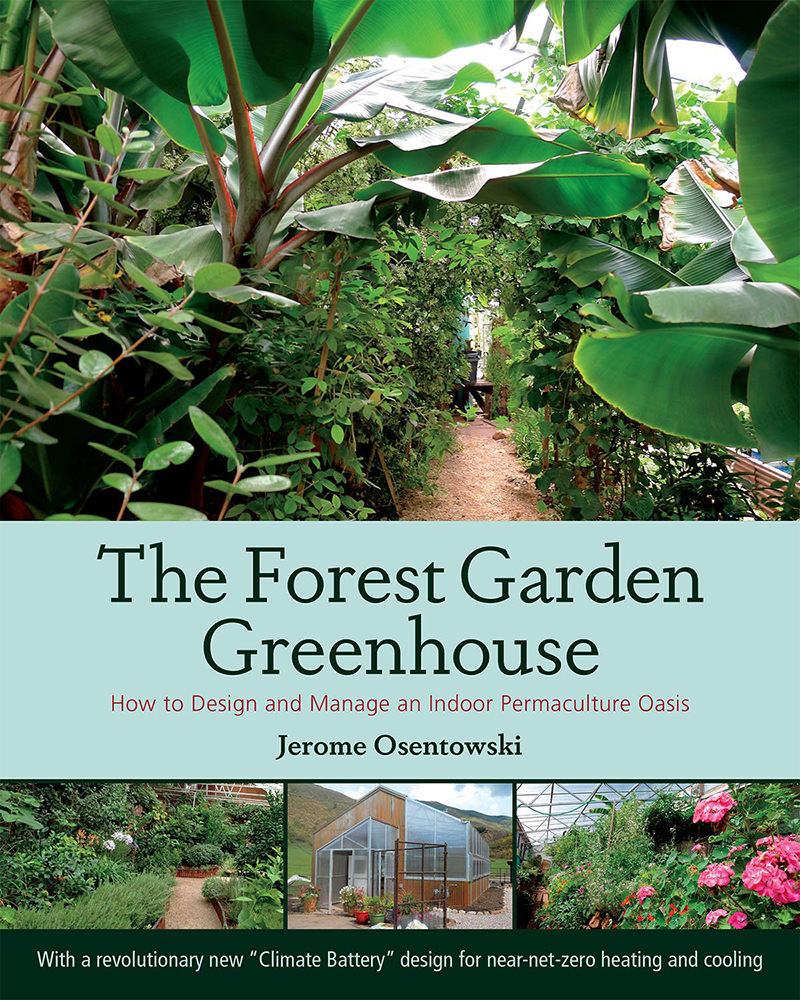
At A Glance
Title: The Forest Garden Greenhouse: How to Design and Manage an Indoor Permaculture Oasis
Author: Jerome Osentowski
Publisher: Chelsea Green
Cover Price: $34.95
Target Audience: Anyone bummed out by a shorter growing season than they’d like
Have you ever wanted your very own tropical forest in your backyard? To grow your own lemons in Ohio? How about figs in Minnesota? Papaya in Wyoming? Well, the good news is you can—and not through a bunch of outside energy and water usage, but through the utilization of well-designed, well-placed greenhouses.
In his new book The Forest Garden Greenhouse, farmer and permaculture practitioner Jerome Osentowski details how he manages to grow things like papaya and figs at 7,200 feet altitude in Basalt, Colo.—deep in mountainous ski country—using very little, if any, outside energy. By employing permaculture concepts of design and multi-usage, Osentowski has created perennial polyculture gardens that more or less take care of themselves—what he describes as “near-net zero.” More than that, he has taken the time to detail exactly how it’s done in this new book.

But growing lemons outside of the South isn’t just as easy as throwing up a hoop house and planting. It takes some careful planning. You need to situate the greenhouse to face the south so you can utilize the sun at its most efficient, and build build a “climate battery” underneath to help trap heat. What is a climate battery? Don’t worry, that question is answered in great detail. Osentowski’s associate, Michael Thompson, describes:
“Climate batteries are simple systems, using fans to drive warm, moist air into perforated tubing that distributes much of that heat and moisture back into the soil, where it can recycle through the roots, trunks, and leaves of plants and return to the battery again and again.”
Built below the greenhouse, the climate battery is essentially a relatively inexpensive way to utilize excess heat from warm days to store for later use. It helps to warm the soil and provide more consistent heat throughout the winter. As you can imagine, being able to keep these greenhouses warm without a lot of outside heat is the only way to make a tropical greenhouse a viable option in the Rocky Mountains. Otherwise, the energy costs would be beyond prohibitive or sustainable. For that reason, Osentowksi and his crew at the Central Rocky Mountain Permaculture Institute spend a great deal of time going into the detail of how to properly construct and manage a climate battery, as well as other heat-trapping sources.
The book is, of course, not just about design. Osentowski also covers the ideal crops for this setting—from lablab to hibiscus; how to manage pests, soil and water; as well as the permaculture principles that will make it all pay off for many years to come.
The Final Word
This is the type of book you didn’t know you needed but may never put down. No matter where you live, you will begin to see the potential for all of the crops you have written off as too tropical or too long-season to grow in your climate. Whether you’re retired and just want a warm place to hang out in the winter and eat Cuban Red Bananas, or are getting your first started and would love to bring more culinary herbs to your market in the Upper Peninsula, this is your book. In fact, this is everyone’s book.




